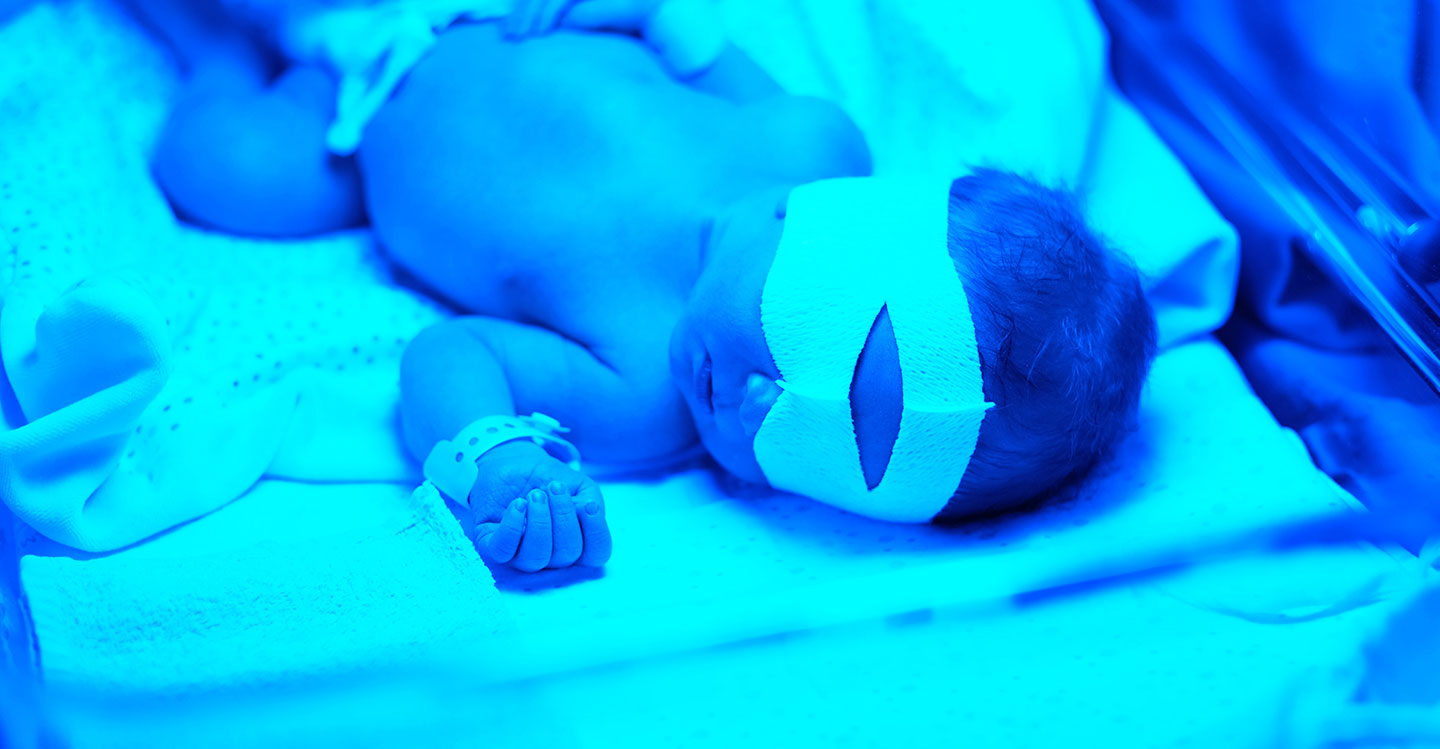What is jaundice?
Jaundice is a yellow discolouration of the skin, also evident in the whites of the eyes. It is often caused by a build-up in the blood of a chemical called bilirubin, a waste product from the normal breakdown of old red blood cells. Bilirubin is usually processed by the liver for expulsion from the body in faeces.
Jaundice can occur in adults – when it is usually a sign of a health problem with the liver, blood, gallbladder or pancreas – but it is far more common in newborn babies.
Other signs of jaundice
As well as the distinctive yellowing of the skin and eyes, jaundice can cause dark-coloured urine and light-coloured faeces (poo). Babies can be unusually drowsy and may have feeding difficulties.
What causes jaundice in babies?
In newborn babies, the condition is usually caused by ‘physiological jaundice’, which occurs because the baby’s liver hasn’t matured enough to process the bilirubin in their blood. This makes jaundice more common in babies born prematurely.
Every newborn has elevated bilirubin, but about 40% will not have any noticeable symptoms and the baby’s liver will soon further develop and lower bilirubin levels. Another common cause is ‘breastmilk jaundice’, which occurs when a chemical in the mother’s breastmilk interferes with the bilirubin processing.
There are a range of other causes of jaundice in babies that can indicate a more serious condition; any appearance of jaundice needs to be medically checked so the cause can be determined and treated.
Diagnosis and treatment
Jaundice can be detected by physical examination and the level of jaundice can be measured by a bilirubinometer – a special machine that takes a reading from the baby’s skin – or it may need one or more blood tests. In more extreme cases, diagnosis may require an ultrasound scan, liver biopsy or exploratory surgery.
Treatment for jaundice depends on the cause. Mild jaundice needs no treatment and is resolved by itself in a few days when the baby’s liver develops further. Moderate jaundice is treated by phototherapy, which uses exposure to blue lights to transform the bilirubin into a less-harmful chemical. This treatment lasts one or two days and usually involves the baby being placed in a warm incubator under phototherapy lights.
In severe but rare cases, a blood transfusion may be needed. Other treatments, which can involve medication or surgery, are uncommon.



